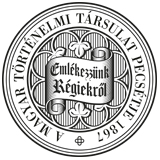Századok – 2014
MŰHELY - Lakatos Bálint: Mezövárosi és falusi önkormányzati testületek Magyarországon a késő középkorban II/495
ÖNKORMÁNYZATI TESTÜLETEK MAGYARORSZÁGON A KÉSŐ KÖZÉPKORBAN 529 produktumai alapján mégis kibontakozik előttünk egy — igaz, töredékes — összkép, a városi önkormányzati szervezetről is. Az időbeli fejlődéstől és a regionális különbségektől eltekintve is leszögezhetjük, hogy a testületek létszáma, tisztségviselőik differenciáltsága kapcsolatba állítható a településeknek a településhierarchiában elfoglalt helyével. A bíró, az esküdtek vagyis a tanács, a külső tanács és más tisztségviselők jelenléte a késő középkorra „telítődő” településhálózatunk „mennyiségi” növekedése mellett egyúttal minőségi változásokat is sejtet, ami megerősíti, hogy ez a fejlődés valójában csak a sokkal jobb forrásadottságú kora újkori városfejlődés előzményeként értelmezhető. COUNCILS IN LATE MEDIEVAL HUNGARIAN MARKET TOWNS (OPPIDA) AND VILLAGES by Bálint Lakatos (Abstract) In this study I attempt to present the organization of the councils of market towns through an analysis of their charters and letters in order to reveal the typical and unique features of them. My aim was to examine one type of sources: all the official documents issued by the towns on the whole territory of the Hungarian Kingdom, including Transylvania and Slavonia, between 1301 and 1526, on the basis of the Pre-Mohács Archives. I excluded, however, those major settlements which were beyond doubt considered as cities (practically the royal free cities and some of the royal mining towns). These documents are also the single most important source material for the organization of towns’ magistrates themselves. In the charters, the council names itself either at the beginning (intitulatio), or at the end in the signature (subscriptio). The titulature in its complete form is composed of four elements: judge (or in some western towns mayor, iudex, Richter, sudac) and counsellors or jurors (iurati, Geschworene, Ratmänner), and other burghers (external council, ceteri cives), and others (from the whole community). The way of identification depends mostly on the type of the case, or on the format of the charter, and less on the importance of the settlement, although major towns’ organizations were larger and more complex. This difference could appear also in the titulature, when all the counsellors were enumerated. Remarkably, there were only slight changes in titulatures in general: it was precisely the set, unchangeable format which provided authenticity. One of the important results of the source analysis is the classification of different sizes and types of town council organizations. The presence or absence of one or more judges can be explained by reasons of ownership, settlement morphology, or the nature of procedures. Reference to more (two, exceptionally three) judges can be interpreted as the result of having two landlords, who designated their own judges (Mezőtúr, Tiszavarsány, Verőce/Virovitica, Bazin/Pezinok, Szentgyörgy/ Sväty Jur, Csenger). Separate quarters\pard plain of a town could have separate bodies which issued each charters of their own (Kesztölc in Tolna county). Settlements with several nuclei may have had special judges (street judges, assistant-judges), who all appeared in the charters (Várad/Oradea). Separate parts of a town could also have their own councils and charters (Upper and Lower city of Körös/Krizevci). Due to procedural reasons, a former judge may appear in the charter together with his successor (Cegléd). In addition, the number of judges could be related to the number of jurors: certain jurors also emerge as judges on account of different functions (judge of mills, judge of hills/vineyards, master of mines, etc.). In these cases, the number of jurors or their absence from the titulature can be informative. Finally, at the beginning of the sixteenth century, the judge could be titled as prime judge (iudex primarius or iudex principalis) and the jurors as juror judges (iurati iudices), as it will become the rule in early modem times. The number of jurors could vary and occasionally fluctuate, but basically it was a fixed number. In late medieval Hungary, town councils can be grouped into three categories based upon the number of persons seated on them. The most widespread type is a council with 12 members. This type occurs in most of the cases, with the judge sometimes included, in other cases one of the jurors being simultaneously judge as well. That is why the 12 members can actually mean 10 to (occasionally) 13 members. (More than 12 members, namely 13 occur only in Korpona/Krupina in
